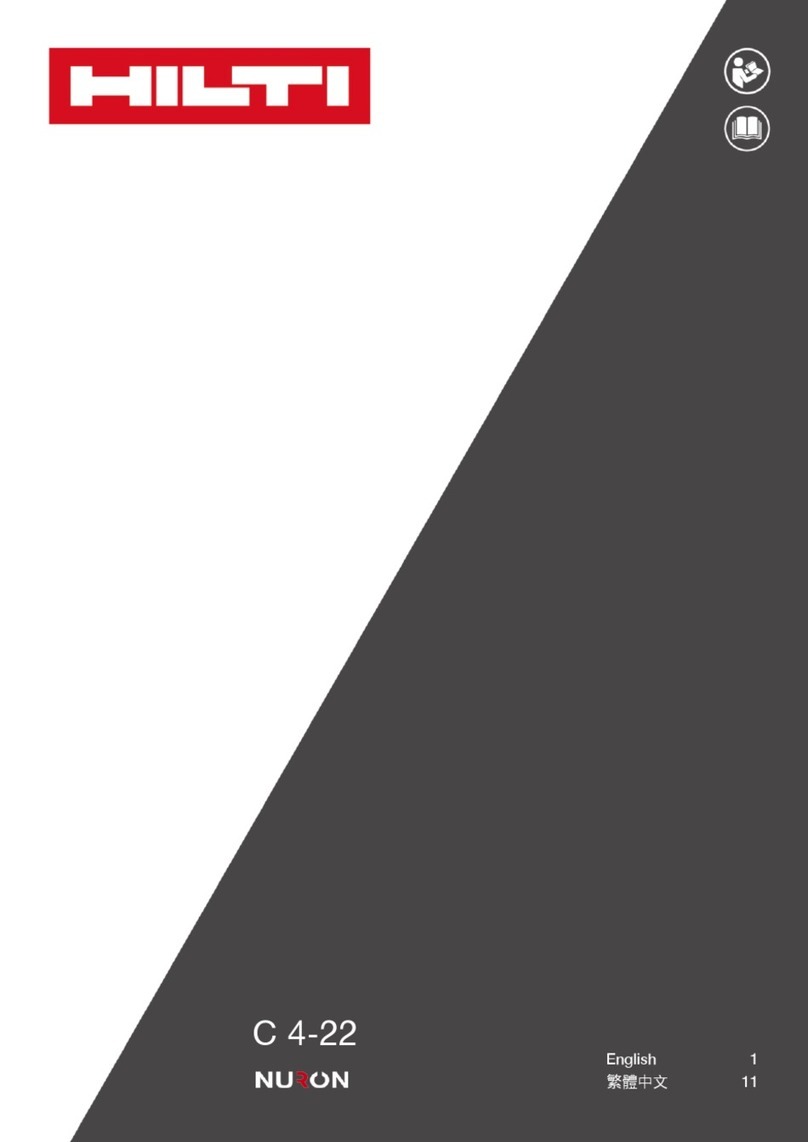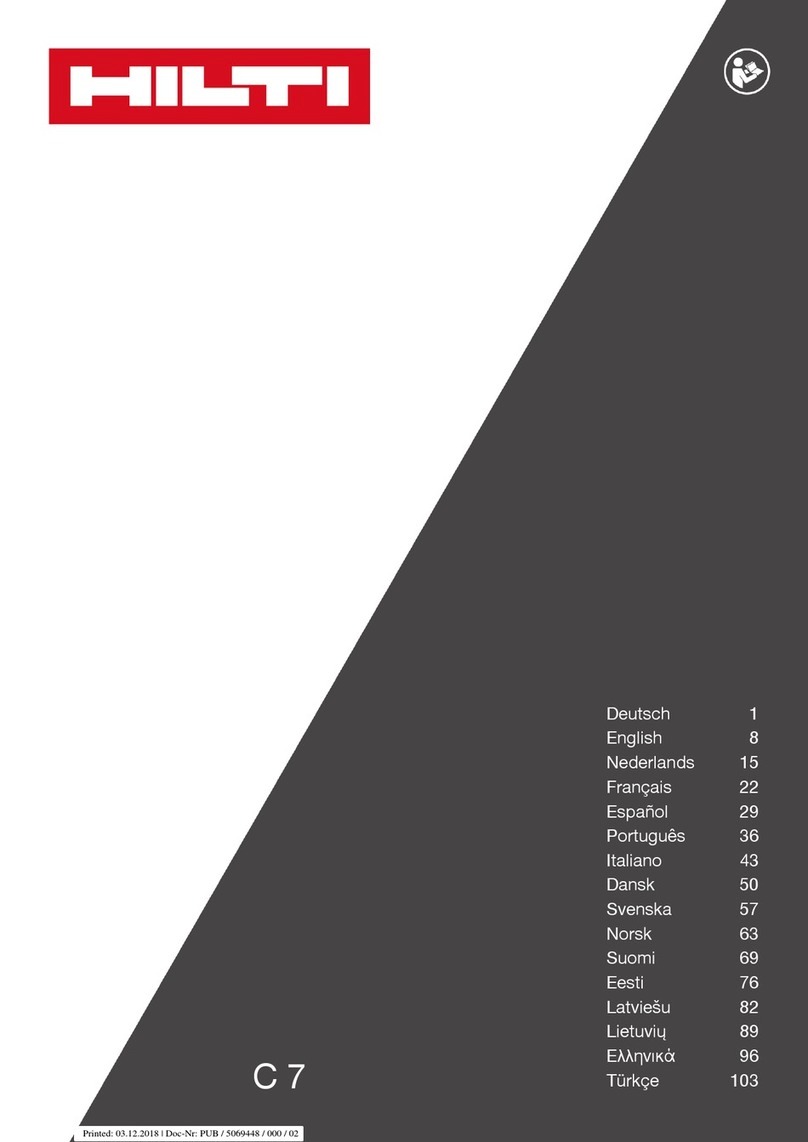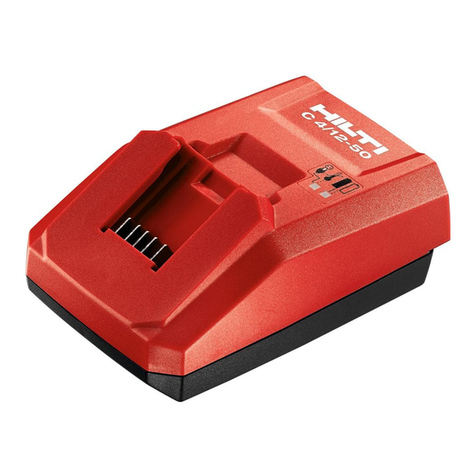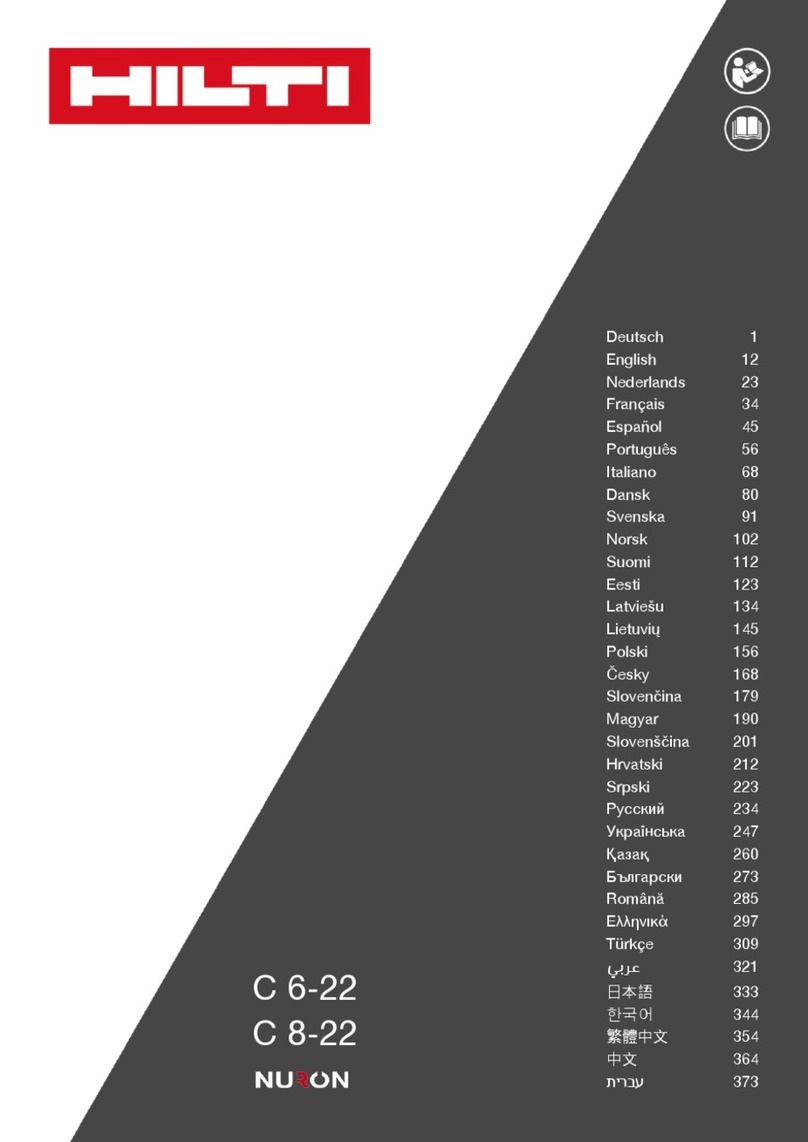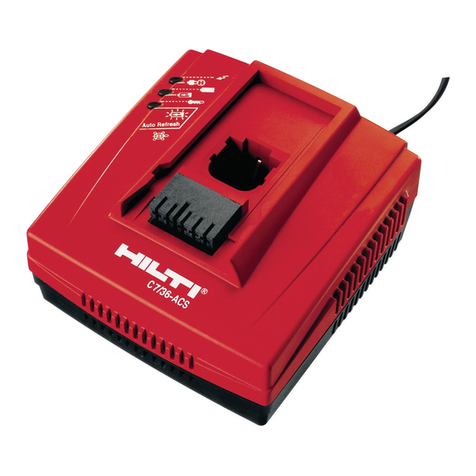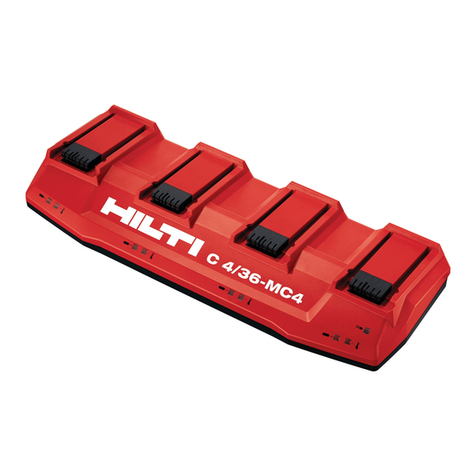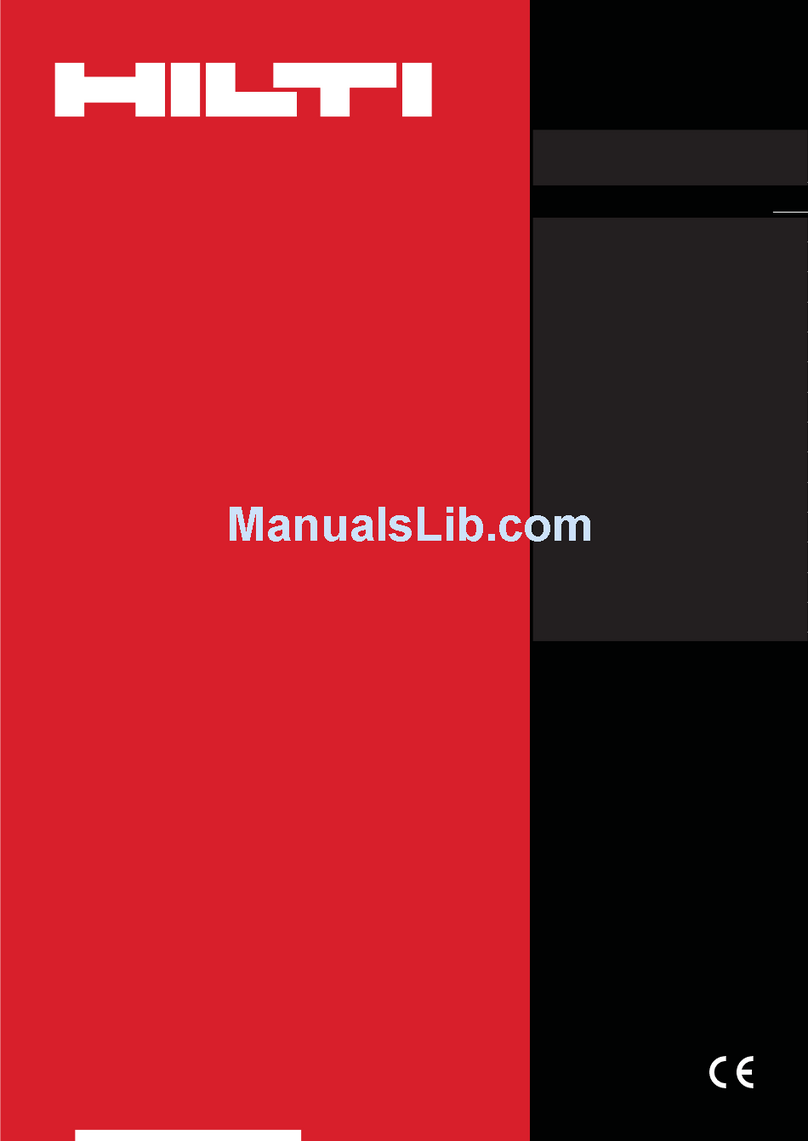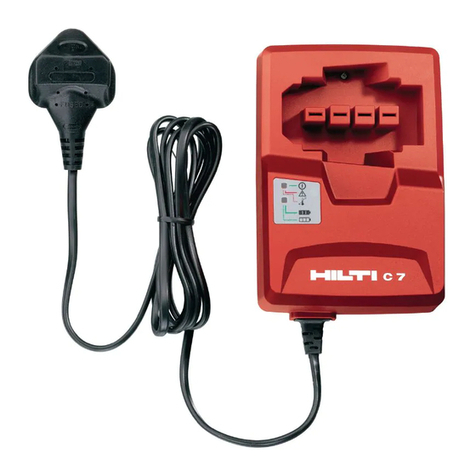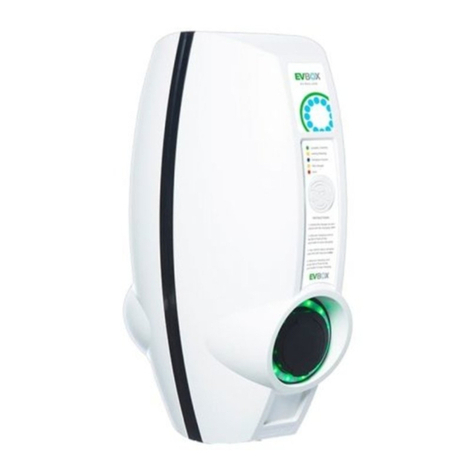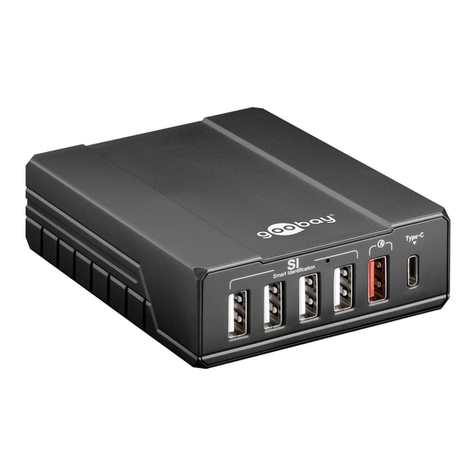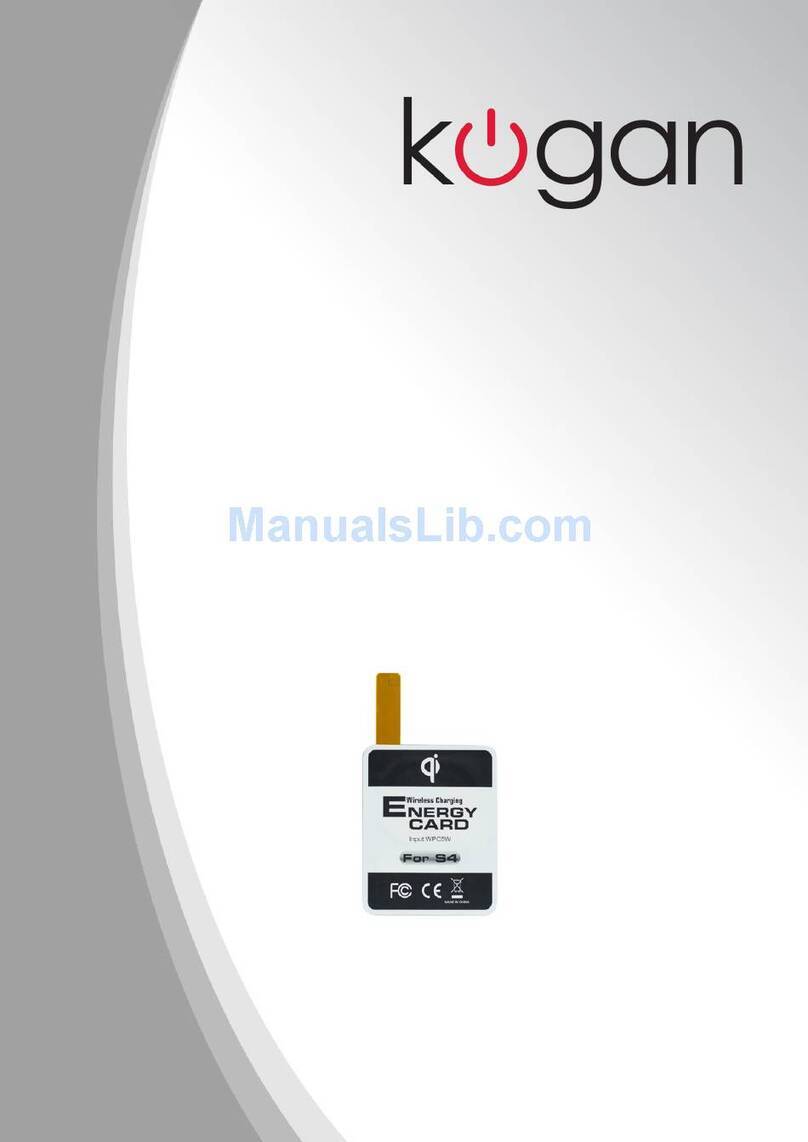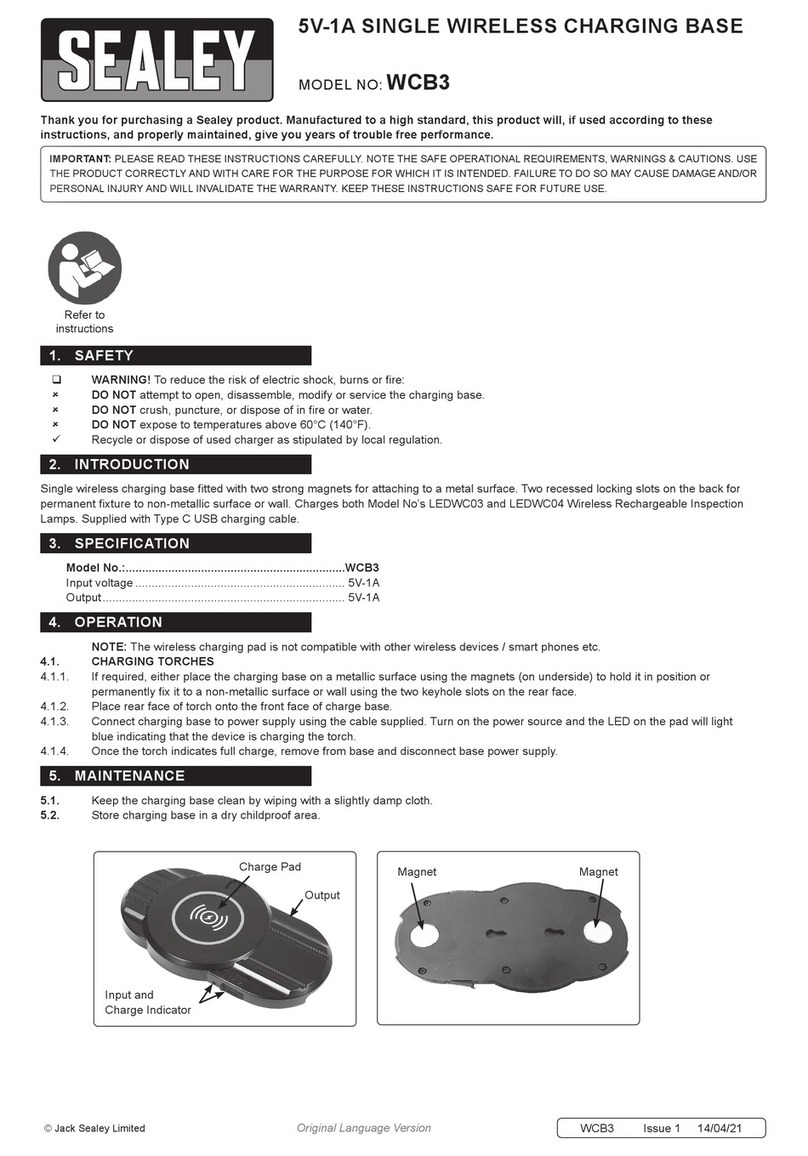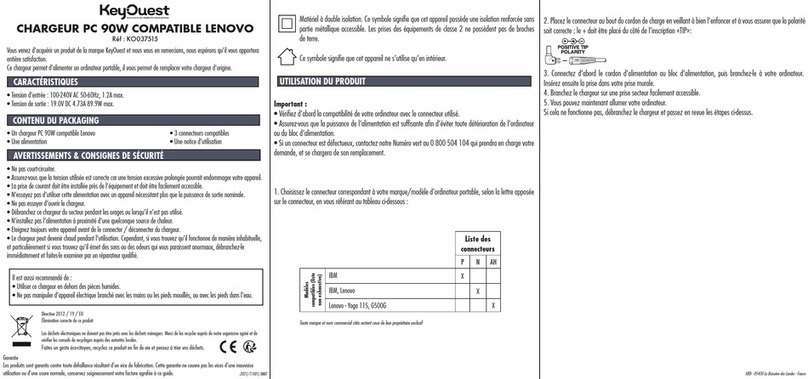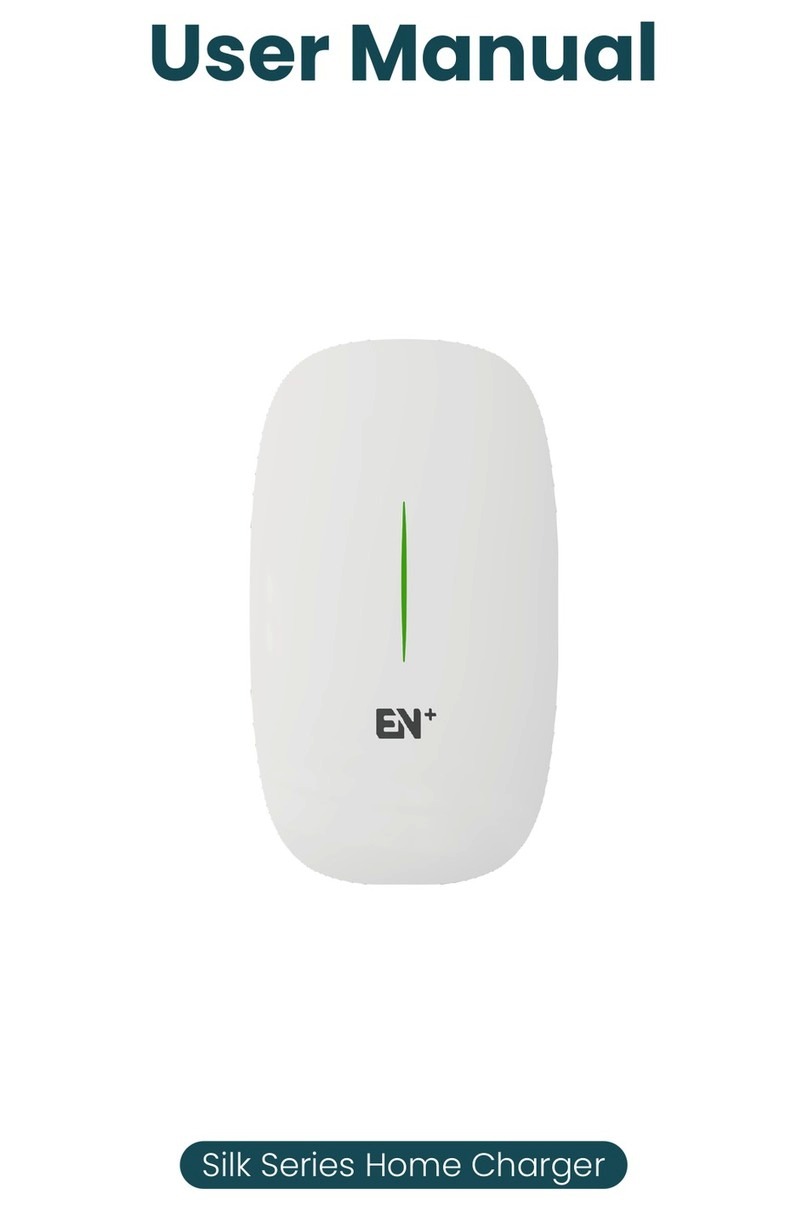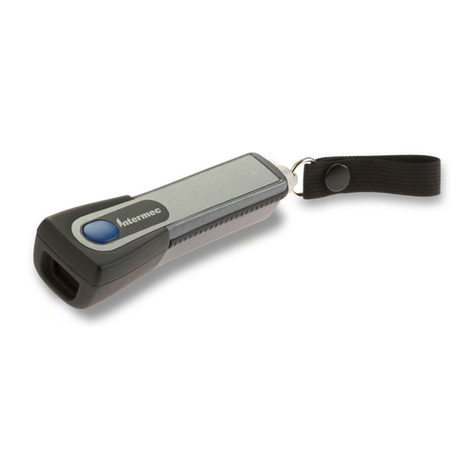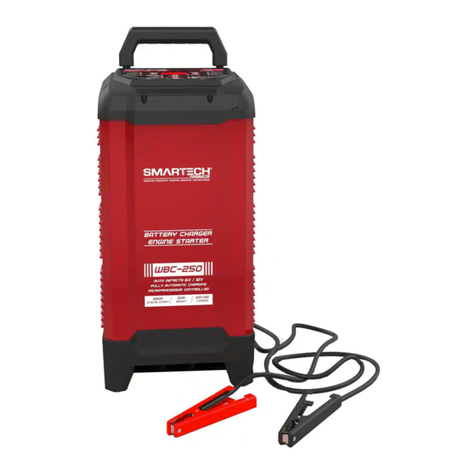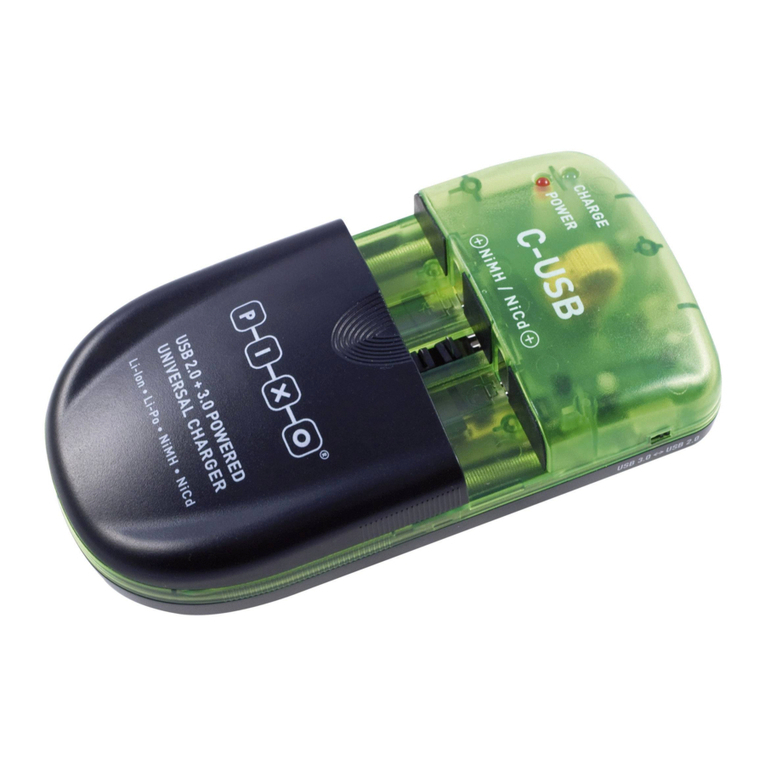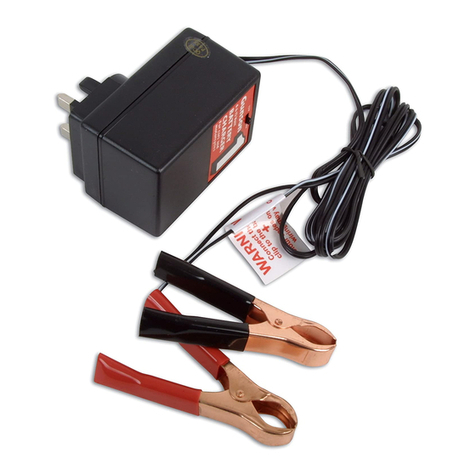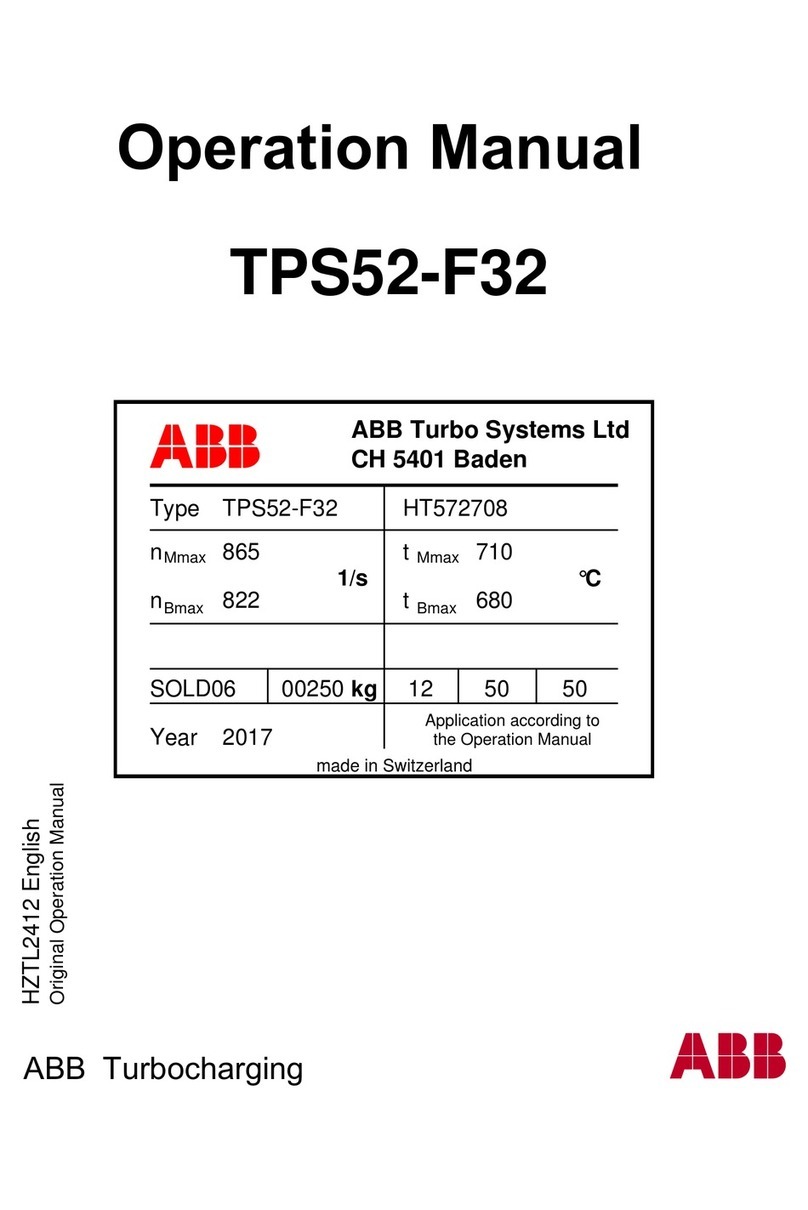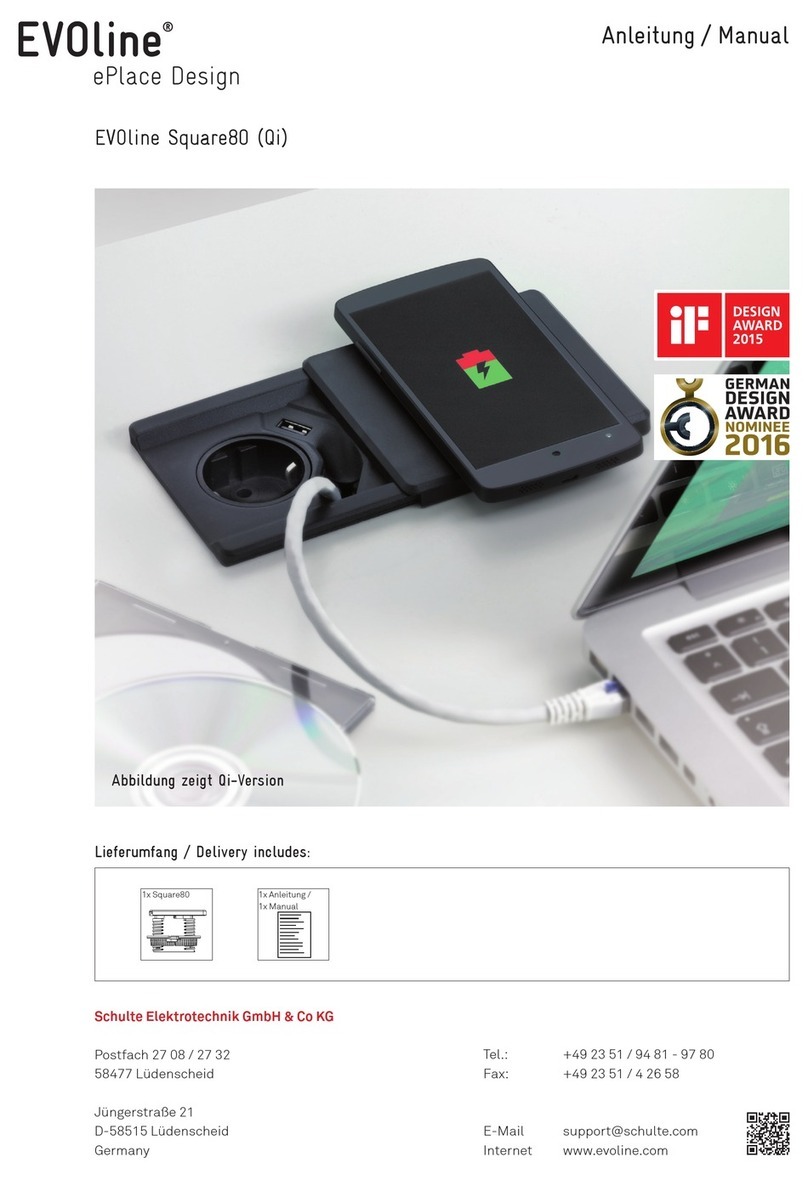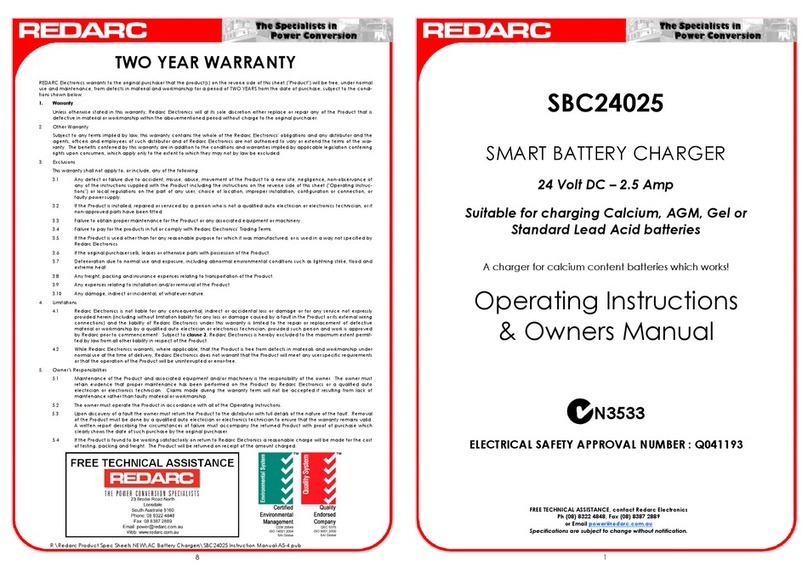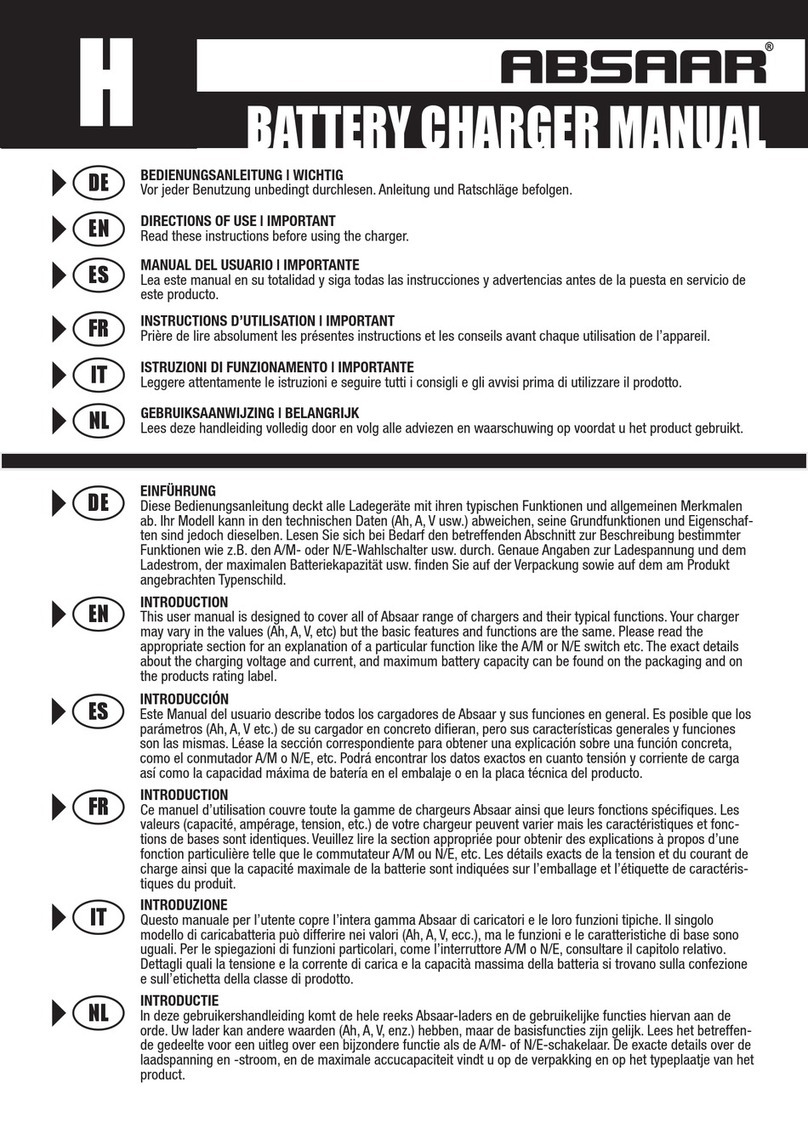
or moving parts. Damaged or entangled cords
increase the risk of electric shock.
e) Use the charger only indoors and protect it from
rain.
4.1.3 Personal safety
Do not wear jewelry such as rings or chains. Jewelry
could cause a short circuit and personal injury in the
form of burns.
4.1.4 Battery charger use and care
a) Use the charger only to charge the Hilti batteries
approved for use with this charger.
b) Do not use a charger if its casing or electric
supply cord is defective.
c) Store chargers out of reach of children when
not in use. Do not allow persons to operate
the appliance if they are unfamiliar with it or
these instructions.. Chargers are dangerous in
the hands of untrained users.
d) Maintain the appliance carefully. Check to en-
sure that no parts are broken or damaged in such
a way that the appliance can no longer func-
tion correctly. If damaged, have the appliance
repaired before use.
e) Use chargers and the corresponding batteries
in accordance with these instructions and as is
specified for this particular model. Use of char-
gers for applications different from those intended
could result in hazardous situations.
f) Recharge only with the charger specified by the
manufacturer. A charger that is suitable for one
type of battery pack may create a risk of fire when
used with another battery pack.
g) When not in use, keep the battery and the charger
away frompaper clips, coins,keys, nails, screws
or other small metal objects that could cause
a short circuit at the battery terminals or the
charging contacts. A short circuit at the battery
terminals or charging contacts could result in
personal injury (burns) or fire.
h) Under abusive conditions, liquid may be ejected
from the battery, Avoid contact with it. If contact
accidentally occurs, flush with water. Consult a
doctor if the liquid comes into contact with the
eyes. Liquids ejected from the battery may cause
irritation or burns.
4.1.5 Service
Have your appliance repaired only by qualified
specialists using only genuine Hilti spare parts.
This will ensure that the appliance remains safe to
use.
4.2 Additional safety precautions
4.2.1 Personal safety
a) Take care to ensure that the charger is standing
in a steady, secure position. A falling battery or
charger may present a risk of injury to yourself or
others.
b) Avoid touching the contacts.
c) Batteries that have reached the end of their life
must be disposed of safely and correctly to avoid
environmental pollution.
d)
e) Children must be instructed not to play with the
appliance.
4.2.2 Battery charger use and care
a) Take care to ensure that the batteries suffer no
mechanical damage.
b) Do not charge or continue to use damaged bat-
teries (e.g. batteries with cracks, broken parts,
bent or pushedಣin and/or pulledಣout contacts).
4.2.3 Electrical safety
a) Do not touch the supply cord or extension cord
if they are damaged while working. Disconnect
the supply cord plug from the power outlet.
Damaged supply cords or extension cords present
a risk of electric shock.
b) Never operate the appliance when it is dirty or
wet. Under unfavorable conditions, dampness or
dust adhering to the surface of the appliance, espe-
cially dust from conductive materials, may present
a risk of electric shock. Dirty or dusty appliances
should thus be checked at a Hilti service center at
regular intervals, especially if used frequently for
working on conductive materials.
4.2.4 Work area safety
Ensure that the workplace is well lit.
en
4
This appliance is not intended for use by per-
sons (including children) with reduced physical,
sensory or mental capabilities, or lack of ex-
perience and knowledge, unless they have been
given supervision or instruction concerning use
of the appliance by a person responsible for their
safety.
Printed: 07.07.2013 | Doc-Nr: PUB / 5069438 / 000 / 01

